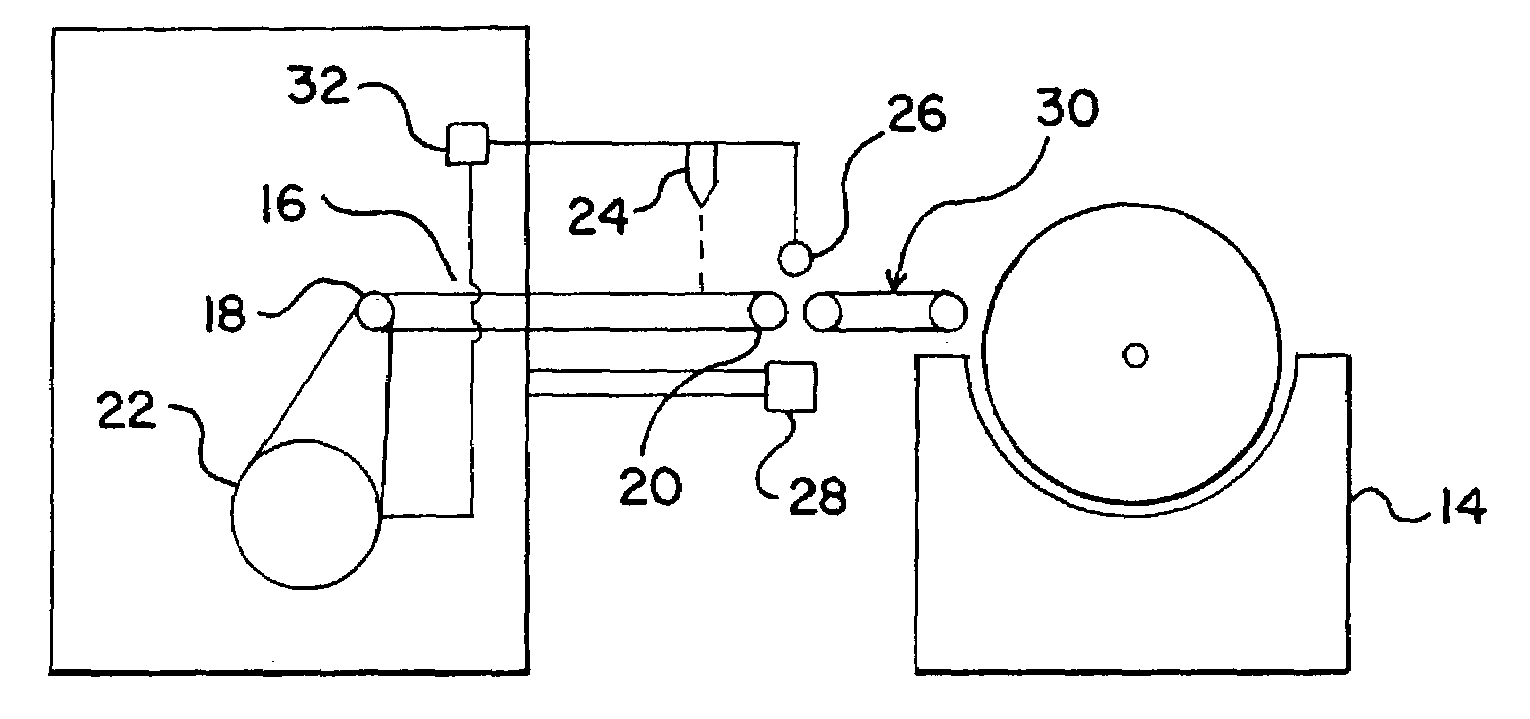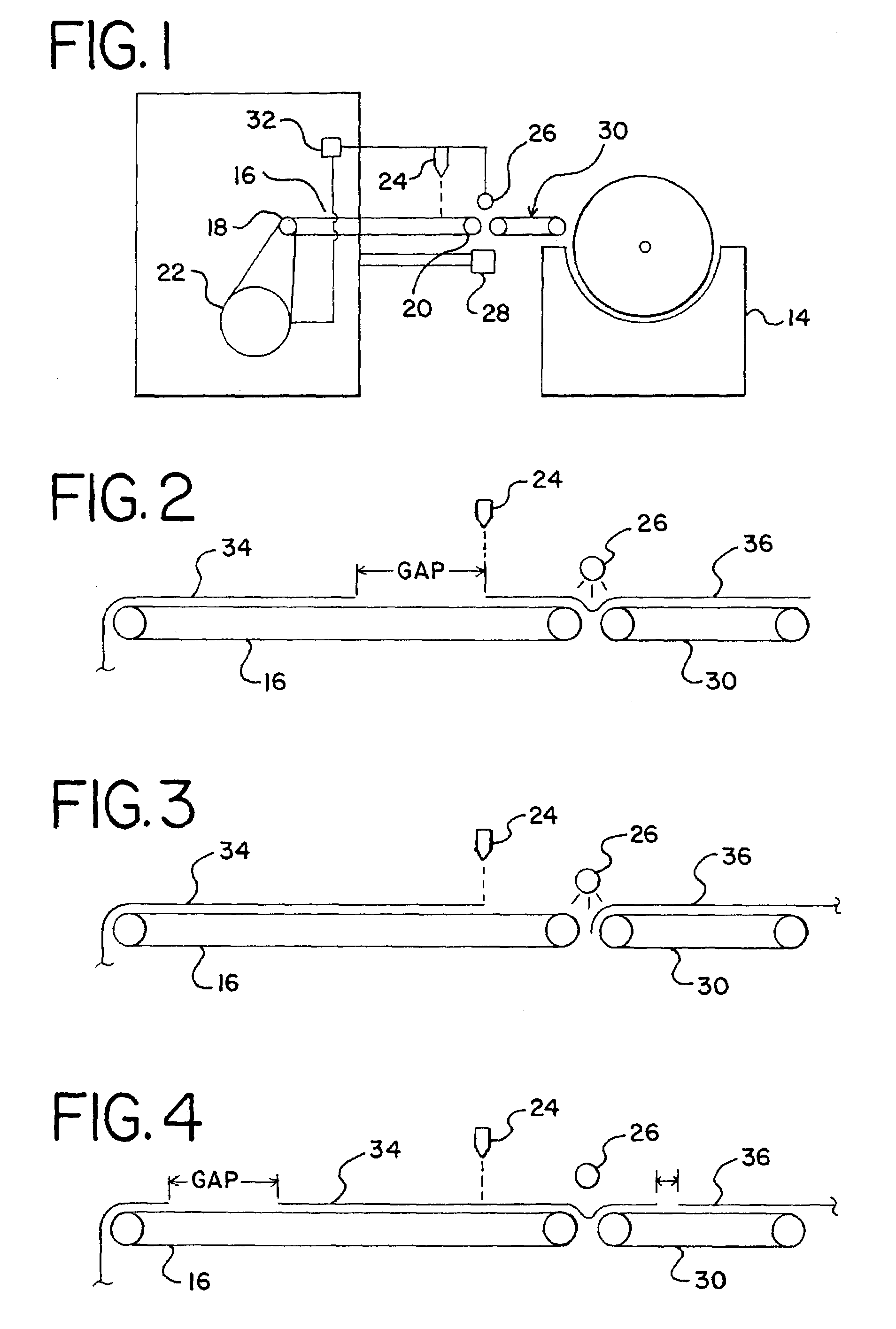Gap reduction system and method for laundry processing
a technology of gap reduction and laundry, applied in the field of laundry machines, can solve the problems of inconvenient and inaccurate positioning of sheets, increased cost, and time required for operators to isolate corners, so as to reduce gaps between articles passed between stations, eliminate or reduce gaps between articles, and facilitate the processing of articles of laundry. the effect of speeding up and speeding up
- Summary
- Abstract
- Description
- Claims
- Application Information
AI Technical Summary
Benefits of technology
Problems solved by technology
Method used
Image
Examples
Embodiment Construction
[0020]A single conveyor with an associated sensor reduces gaps between articles of laundry passed from one automated laundry processing station to another automated laundry processing station. The gap is reduced without slowing down the operation of the upstream processing station. The reduction in the gap may maximize the efficiency of a downstream laundry processing station. For example, the input rate of a feeder is maximized by occasionally speeding up the feeder exit conveyor to reduce the gap between articles of laundry. By reducing the gap, a downstream ironer is provided with articles of laundry for ironing with minimal spaces or gaps.
[0021]FIG. 1 shows a gap reduction system for passing laundry between two laundry stations 12, 14. The same system may be provided at the output of any station within a series of two or more stations. As shown in FIG. 1, the system is provided on the output of a spreader-feeder station 12 for reducing the gaps between articles of laundry provid...
PUM
 Login to View More
Login to View More Abstract
Description
Claims
Application Information
 Login to View More
Login to View More - R&D
- Intellectual Property
- Life Sciences
- Materials
- Tech Scout
- Unparalleled Data Quality
- Higher Quality Content
- 60% Fewer Hallucinations
Browse by: Latest US Patents, China's latest patents, Technical Efficacy Thesaurus, Application Domain, Technology Topic, Popular Technical Reports.
© 2025 PatSnap. All rights reserved.Legal|Privacy policy|Modern Slavery Act Transparency Statement|Sitemap|About US| Contact US: help@patsnap.com


